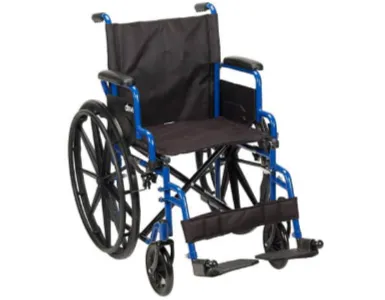How does a person in a wheelchair go to the bathroom? Wonder no more!
As an experienced wheelchair user and expert, I’ve compiled a comprehensive guide covering essential equipment and DIY solutions to enhance bathroom accessibility.
Backed by extensive research and practical expertise, this guide provides invaluable insights into enhancing bathroom accessibility for wheelchair users—and a live demonstration!
Keep reading to unlock essential tips and take a step towards creating a more inclusive and accessible bathroom environment today!
Table of Contents
Key Takeaways
- Skilfully overcome Accessibility Barriers: Focus on creating adequate space – install grab bars, update your fixtures, and ensure a slip-resistant bathroom environment.
- Safely transferring from Wheelchair to Toilet: Use proper equipment, such as transfer boards and grab bars, and follow step-by-step techniques for a secure and efficient transfer.
- Establish a Regular Bathroom Routine: Develop a consistent bathroom schedule tailored to a person’s needs and preferences to minimize accidents and promote a healthy routine.
How Does a Person in a Wheelchair Go to the Bathroom (5 Easy Steps)
If you’re using a wheelchair, follow these 5 steps for a secure and efficient transfer from a wheelchair to the toilet:

- Position the wheelchair at a slight angle, close to and facing the toilet.
- Lock the wheelchair brakes and ensure the toilet seat is secure.
- If using a transfer board, place one end on the wheelchair seat and the other on the toilet seat.
- Assist the user in shifting their weight and sliding across the transfer board or help them stand and pivot towards the toilet.
- Once seated on the toilet, remove the transfer board (if used) and provide any necessary support.
It’s important to understand common challenges and pitfalls when transferring from a wheelchair to the bathroom – to ensure you can tackle them, flip to the next section…
Join me for a quick tutorial on mastering the smooth and safe navigation of a wheelchair:
Preventing Injuries during Toilet Transfers: 4 Essential Tips for Caregivers
As a caregiver – or a compassionate family member – you must ensure the safety of both you and the individual you’re assisting and prevent injury.
To do this, here are 4 Super Tips for Caregivers During Toilet Transfers – and they’re superb for me:
- Communicate clearly with the person you assist and encourage them to speak up about any discomfort or concerns during the transfer.
- Assess the individual’s needs, mobility, and environment before transferring, and plan accordingly to minimize risks.
- Use proper body mechanics, such as bending at the knees and avoiding twisting or overreaching.
- Maintain a safe environment by keeping the bathroom area clutter-free, providing non-slip flooring or mats, and adequate lighting.
Establishing a routine is crucial to implementing these tips successfully.
Thankfully, I’ve created a step-by-step video guide for you. With these tips, caregivers can assist individuals in using the bathroom safely and prevent injuries (scroll to the next section…)
I recommend checking out articles on “handicap accessible bathroom designs” and “converting bathroom to handicap accessible” for practical guidance on creating a safe and functional bathroom for individuals with disabilities.
Effortless Steps for Safe Wheelchair-to-Toilet Transfers: Live Demonstration
For an effortless wheelchair transfer, I’ll explain each step as discussed in Bathroom Transfers for Wheelchair Users!
Before starting, install a padded cushion on the toilet seat for comfort and pressure sore prevention.
Follow these simplified steps for a successful transfer:
- Position the wheelchair close to the toilet, parallel, and engage the brakes.
- Assist the individual in scooting forward and transferring weight onto the toilet seat.
- Help adjust legs for comfort, push the wheelchair back, and set brakes again.
To return to the wheelchair:
- Instruct the individual to place hands on the toilet seat or grab bar, ready to push up.
- Encourage using upper body strength to lift and twist towards the wheelchair.
- Guide them as they lower back onto the wheelchair seat, ensuring a secure position.
These user-friendly steps ensure a safe and efficient transfer experience, promoting independence and well-being for the individual.
Additional Safety Tips for a Wheelchair-Accessible Bathroom
According to Grand View Research, “The global wheelchair market size was valued at USD 4.1 billion in 2020 and is expected to expand at a compound annual growth rate (CAGR) of 7.6% from 2021 to 2028” [1].
With the global wheelchair market projected to continue its growth trajectory, it’s more important than ever to prioritize bathroom accessibility for wheelchair users [1].
To achieve this, install the following in your bathroom:
- Grab bars: Sturdy grab bars provide additional support during transfers and toileting.
- Transfer boards: These assist in bridging the gap between the wheelchair and the toilet, facilitating a smoother transfer.
- Raised toilet seats: A raised seat reduces the distance between the wheelchair and the toilet, minimizing strain during transfers.
Next, to make your bathroom accessible to wheelchair users and prevent injuries, look no further than the ADA guidelines [2].
Not only are they packed with valuable suggestions, but they’re also designed to be user-friendly and easy to follow.
But why stop there? Next, let’s discuss how to establish the perfect bathroom routine…
Establishing a Regular Bathroom Routine for Wheelchair Users
A consistent bathroom schedule offers several benefits, such as minimizing accidents and promoting a healthy routine.

Here are 3 helpful tips for creating a personalized routine:
- Assess the individual’s unique needs and preferences.
- Monitor fluid intake and establish regular bathroom breaks.
- Encourage the wheelchair user to participate in planning their schedule to promote a sense of autonomy.
For more quick and easy tips, check out these frequently asked questions…
Be sure also to check out the articles on “Small Bathroom Designs for Disabled” and “Accessible Bathroom Design” for great ideas and tips on creating a safe and comfortable bathroom for people with disabilities. Take care and stay inspired!
Frequently Asked Questions
1. How can I make my bathroom wheelchair accessible?
Ensure adequate space, install grab bars, use a raised toilet seat, and consider a roll-in shower [3][4].
2. How do I safely transfer someone from a wheelchair to the toilet?
Follow a step-by-step guide, use proper equipment, and communicate effectively.
3. Can wheelchair users benefit from a regular bathroom schedule?
Yes, a consistent schedule can help minimize accidents and promote a healthy routine.
Conclusion
Now that I’ve addressed your question, “How does a person in a wheelchair go to the bathroom” here’s the mini version:
Implementing the proper equipment, following a step-by-step guide for transfers, and establishing a regular bathroom routine can significantly improve the lives of wheelchair users.
Now that I’ve presented some key solutions, let me know what worked for you – I’d love to hear!

Resources
1. Wheelchair Market Size, Share & Growth Report, 2030 [Internet]. www.grandviewresearch.com. [cited 2023 Apr 14]. Available from: https://www.grandviewresearch.com/industry-analysis/wheelchair-market#:~:text=Frequently%20Asked%20Questions%20About%20This%20Report&text=The%20global%20wheelchair%20market%20size%20was%20estimated%20at%20USD%204.8
2. ADA.gov homepage [Internet]. Ada.gov. 2013. Available from: https://www.ada.gov/
3. Rimmer JH, Riley B, Wang E, Rauworth A. Accessibility of Health Clubs for People with Mobility Disabilities and Visual Impairments. American Journal of Public Health [Internet]. 2005;95:2022–8. Available from: https://www.ncbi.nlm.nih.gov/pmc/articles/PMC1449478/
4. Koontz AM, Bass S, Kulich H, Cooper RA. Effects of grab bars and backrests on independent wheelchair transfer performance and technique. Physiotherapy Research International. 2018;24:e1758.





